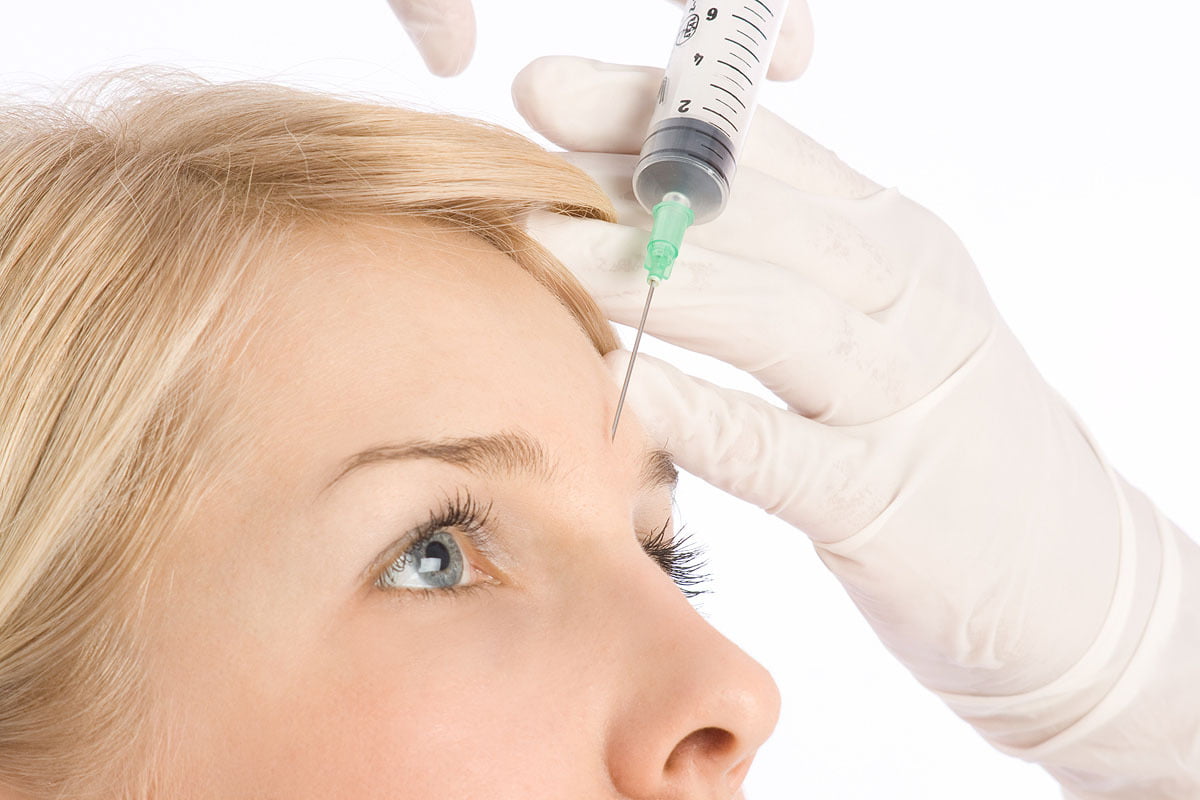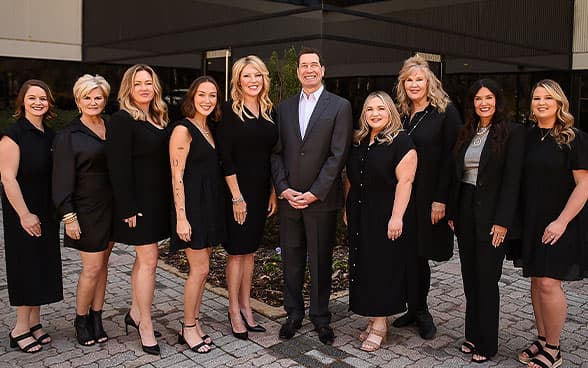Answering the Top 8 Questions You Have About BOTOX
August 26, 2019 - Rhys Branman, MD
It’s safe to say that most everyone has at least heard of BOTOX®—and, whether they choose BOTOX or Dysport®, a huge number of folks swear by botulinum toxin’s ability to help smooth out brow wrinkles and help them them feel more confident in their day to day lives. In fact, over 7 million botulinum toxin treatments were performed on American men and women last year alone!
Despite its popularity, this wrinkle-fighting injectable is still a mystery to many. To help you out, we’ve answered some of the most frequently asked questions about BOTOX we receive.
1. Will BOTOX make my face look frozen?
This is one of the most common questions we receive, and it’s normal to feel concerned about your ability to express yourself post-BOTOX. It’s true that BOTOX works by disrupting signals between your nerves and muscles to reduce muscle movement—but by using the appropriate amount and precisely placing injections, a highly experienced provider will not create a frozen appearance. Rather, you will notice a reduction in muscle activity (and the creasing it was causing) in small, specific areas while still being able to freely move the rest of your face.
During your consultation, explain to your provider what kind of results you’d like to see. The technique and amount of product used to achieve a super smooth result can be vastly different than what is needed to merely soften creases.
2. Is BOTOX poisonous?
No! Seeing the word “toxin” can be a little startling, but BOTOX has an impressive track record of safety when used appropriately by reputable providers—and it’s been used and comprehensively studied for nearly 30 years. While BOTOX is a toxin derived from a bacteria, the diluted concentration that is used cosmetically contains very little bacterial activity; it’s just enough to relax treated muscles.
3. How long does BOTOX last?
On average, the effects of BOTOX last around three to six months, at which point you’ll gradually start to see muscle response return and expression lines pop back up. With repeated maintenance treatment, some patients report that the severity of their wrinkles lessens and they can space out treatments for longer periods.
4. Where can BOTOX be injected?
BOTOX is most often used cosmetically to improve expression lines on the forehead, between the eyebrows, and around the outer edges of the eyes, but it is also sometimes used to treat chin depressions, “gummy” smiles, or elevate a downturned mouth. It’s important to remember that BOTOX Cosmetic is only FDA approved for use on the forehead, between the eyebrows, and for crow’s feet, and off-label use should be considered very carefully and with an experienced provider.
Fun fact: BOTOX’s original product (simply called BOTOX, instead of BOTOX Cosmetic), is FDA approved to treat a number of concerns, including bladder dysfunction, chronic migraines, severe underarm sweating, and more.
5. What are BOTOX units?
A BOTOX unit is a measurement of the biological activity and potency of the BOTOX rather than the weight or volume. BOTOX is diluted by your doctor with saline solution to make it a liquid, so your syringe volume does not correspond to the BOTOX unit. Vials of BOTOX contain 100 units.
6. How much does BOTOX cost?
The final price of BOTOX varies from person to person, based on the severity of their concerns, where they are receiving injections, and how much product is needed to see great results. That’s why BOTOX is typically priced per unit. Depending on the provider you choose, units typically cost anywhere between $12 – $15 apiece—and your final fee is the combined price of units used. For example, if you have your forehead lines, glabellar creases, and crow’s feet treated with 60 units of BOTOX priced at $13/unit, your treatment cost would be around $780. (Helpful hint: we often run special discounts for BOTOX, so be sure to keep an eye out on our specials page!)
7. What’s the difference between BOTOX & Dysport?
BOTOX may be a household name, but it’s no longer the only wrinkle-fighting botulinum toxin on the market. Dysport received its FDA approval for treatment of glabellar lines in 2009, and it may be a good BOTOX alternative for some. In our practice, we’ve found that patients who don’t respond well to BOTOX—or who are seeing less dramatic results with repeated BOTOX treatments—often benefit from switching to Dysport.
In terms of technical differences between BOTOX & Dysport, Dysport is formulated with smaller molecules, which means it works slightly faster than BOTOX and may spread to a larger area. It also means that dosing and unit pricing are different, but we’ve found that the final cost of treatment with either product is similar.
8. Who should I choose for BOTOX injections?
The key to safe and effective BOTOX treatment (and gorgeous results) is choosing an experienced, reputable, and highly trained provider. We recommend working with a board certified cosmetic surgeon, aesthetician or nurse injector working under physician supervision, or a dermatologist. They will have better knowledge of facial anatomy, which is critical to your getting the results you want.
Whatever you do, avoid bargain BOTOX. Questionable providers often over-dilute the product, resulting in ineffective concentrations of BOTOX, if the product is even BOTOX at all. Additionally, an inexperienced injector is more likely to misjudge how much you need or inject the toxin incorrectly, which can result in temporary paralysis of additional parts of your face.
If you’re looking to get BOTOX injections in Little Rock, we encourage you to contact us today. We’d love to sit down with you to chat about what BOTOX can do for you, help you explore your options, and answer any questions you may have during a personal consultation.

